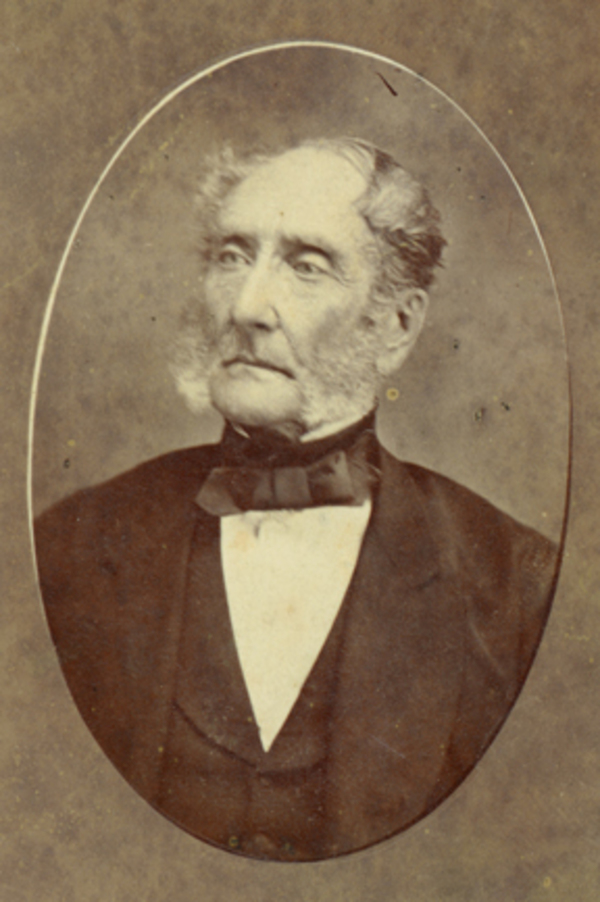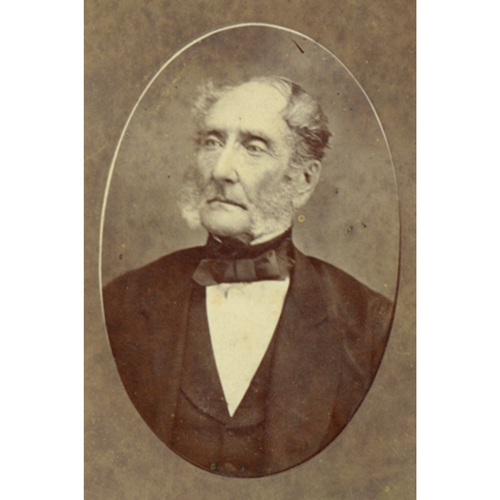
Source: Link
MACKIESON, JOHN, physician and surgeon; b. 16 Oct. 1795 in the parish of Campsie (Strathclyde), Scotland; m. 11 Feb. 1830 Matilda Brecken, and they had two sons and two daughters who lived to maturity; d. 27 Aug. 1885 in Charlottetown, P.E.I.
John Mackieson received a classical education in his native Scotland and studied medicine at the University of Glasgow, graduating in 1815. He practised in Liverpool before immigrating in 1821 to Prince Edward Island. Although Mackieson lived in Charlottetown, his practice extended throughout Queens County. His marriage in 1830 to a daughter of the merchant and assemblyman, Ralph Brecken, connected him with a number of influential families, including the land-owning McDonalds of Glenaladale, the politically prominent Havilands, and the shipbuilding Peakes.
Mackieson was appointed to numerous official positions. In 1833 he became health officer for the port of Charlottetown, serving until 1851, and in 1848 was appointed surgeon general of the militia. He was also medical attendant to the jail. Other activities were as medical examining officer for the New York Life Insurance Company and elder of St James Presbyterian Church.
His most significant work, however, was as medical superintendent of the lunatic asylum opened in Charlottetown in 1848. For the next 26 years he worked zealously for the mentally ill, although he was paid little and his efforts were hampered by crowded conditions and limited resources. His humane and enlightened attitude toward the treatment of patients is shown by his providing them with facilities for physical exercise, setting up a small library, and allowing them “all liberty their condition will permit.” Despite the lack of space, which he warned would cause the institution to become a place of detention rather than cure, Mackieson maintained that the proportion of recoveries he attained was greater than that of similar institutions in Britain and the United States.
Year after year he petitioned the legislature for additional space, adequate heating, and recreation yards. Although some of his requests were met, that for adequate accommodation was not, and as late as 1873 he deplored the fact that “a proportion of the patients are obliged to be entombed in the basement of the building.” The following year a grand jury strongly criticized the asylum, citing cases of inmates confined in unsanitary underground cells, and Mackieson and the keeper, Richard M. Gidley, were indicted for misfeasance in the execution of their offices. Gidley was brought to trial, but a true bill was not found against Mackieson who nevertheless was forced to resign in July 1874. Although this event was unfortunate after Mackieson’s years of devoted service, it was a key factor in getting action on the construction of a new asylum. Money for construction costs was approved by the legislature in 1876, and the new building was completed by 1880. Although no longer superintendent, Mackieson retained his interest in the institution, visiting it as late as 1884 when he was 89 years old.
Mackieson was also active in other areas of medicine. In 1856, for example, as chairman of the Prince Edward Island Medical Association, he unsuccessfully petitioned the assembly for an act that would set standards for the medical profession and prevent unqualified persons from practising. His awareness of proper medical procedures is best shown by the detailed records he kept, including his manuscript, “Sketches of medical and surgical cases,” which described symptoms and methods of treatment. In 1878 he wrote a 488-page manuscript, “A formulary of medical and surgical prescriptions,” which served as a prescription reference for practitioners and included quotations from leading medical authorities. Mackieson’s two manuscripts portray a man of inquiring mind, both studious and precise. His diary, which he kept for almost 35 years, indicates that as well as being a skilled physician, he was a well-rounded man with kindly humour and a zest for life.
John Mackieson’s “Sketches of medical and surgical cases, exhibiting a concise view of the character, causes, symptoms, morbid appearances, and method of treatment adopted in the more important cases, with notes and practical remarks; 1821 et seq.,” and “A formulary of medical and surgical prescriptions, being a complete conspectus of recipes, compounds and pharmaceutical preparations, original and selected, by standard authorities, classified according to their medical virtues, and a copious index to the same, and of diseases in which they are administered, the whole forming a valuable daily reference of practitioners of medicine,” are in the possession of R. G. Lea (Charlottetown).
PAPEI, John Mackieson, Diaries, 1852–85. P.E.I, House of Assembly, Journal, 1849–74. Examiner (Charlottetown), 1874–85. Prince Edward Island Gazette (Charlottetown), 1821. Prince Edward Island Register (Charlottetown), 1823–30. Royal Gazette (Charlottetown), 1830–52. Past and present of P.E.I. . . . (MacKinnon and Warburton).
Cite This Article
Irene L. Rogers, “MACKIESON, JOHN,” in Dictionary of Canadian Biography, vol. 11, University of Toronto/Université Laval, 2003–, accessed December 31, 2025, https://www.biographi.ca/en/bio/mackieson_john_11E.html.
The citation above shows the format for footnotes and endnotes according to the Chicago manual of style (16th edition). Information to be used in other citation formats:
| Permalink: | https://www.biographi.ca/en/bio/mackieson_john_11E.html |
| Author of Article: | Irene L. Rogers |
| Title of Article: | MACKIESON, JOHN |
| Publication Name: | Dictionary of Canadian Biography, vol. 11 |
| Publisher: | University of Toronto/Université Laval |
| Year of publication: | 1982 |
| Year of revision: | 1982 |
| Access Date: | December 31, 2025 |




